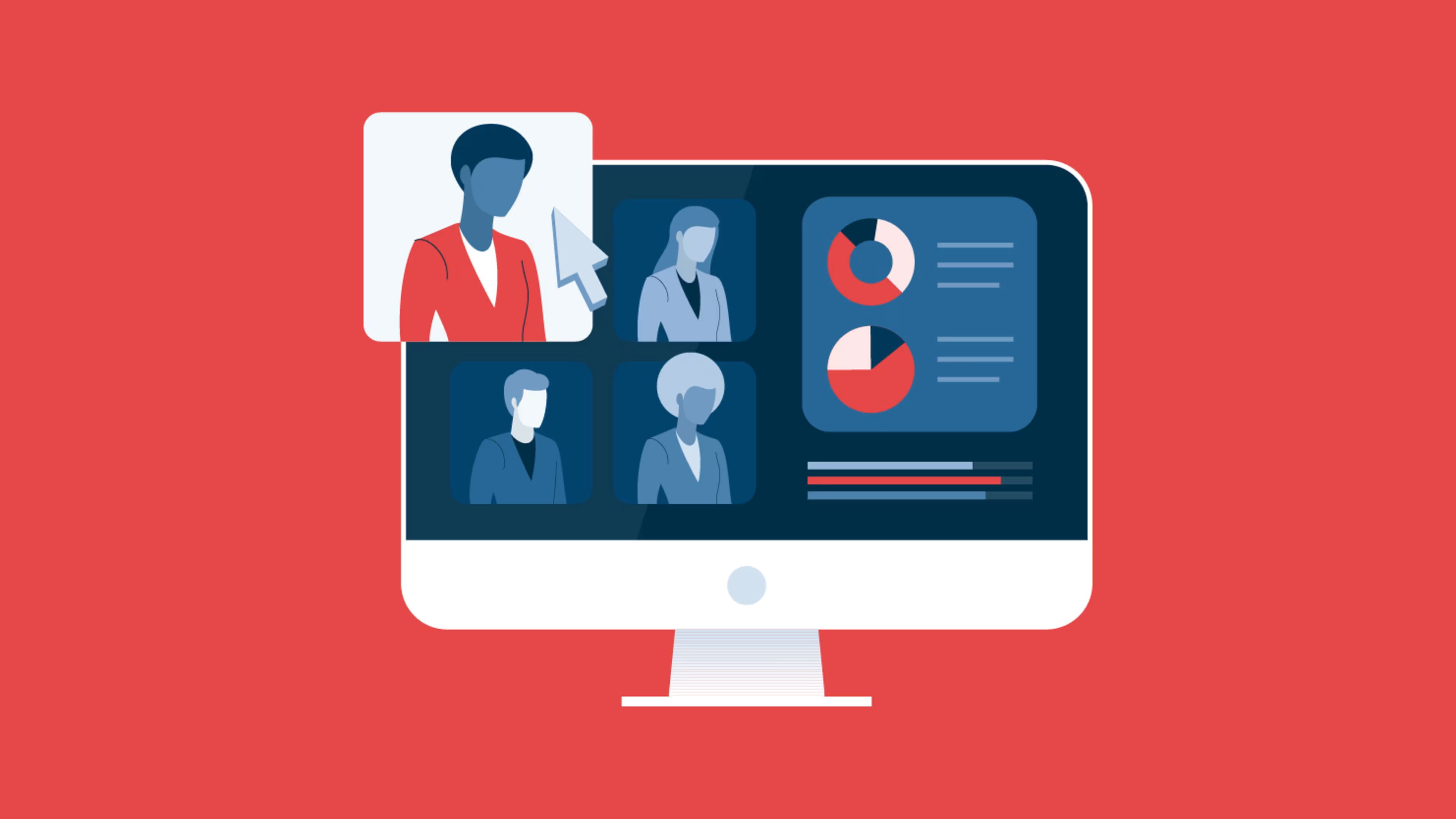A deep dive into the priorities and characteristics of each generation in today's workforce.
Having a generationally diverse workforce is an oxymoron for today's employees; the majority (89%) consider generational diversity in the workplace a positive, but also (78%) believe that a multigenerational workplace can lead to conflict.[1]
That leaves people directors and team leaders to figure out how to not only prevent dissension between coworkers of different generations but also how to harness the different perspectives within their workplace in a way that leads to better collaboration and thought diversity.
It all begins here: with understanding the work styles and priorities of each generation currently in the workforce. Ahead, we use research from Gartner and the perspective of John Owen, director of security analytics at Fulcrum Technology, to break down what you need to know about each generation currently in the workforce.[2,3]
Ready to hire a recruiting agency for your business needs? Browse our list of companies in the following areas:
Meet the manager
As the director of security analytics at Fulcrum Technology, John Owen currently oversees a team of six in a mostly remote work environment. His reports span from Generation Z to Generation X, with most of them being millennials (including Owen himself). And because his position involves regularly interacting with executives at Fulcrum, he also has experience communicating with those senior to himself in age and work experience. You’ll hear Owen’s perspective throughout the rest of this guide.
The generations at work in 2023
Currently, there are five different generations active in the workforce[4]:
The silent generation
Baby boomers
Generation X
Millennials
Generation Z
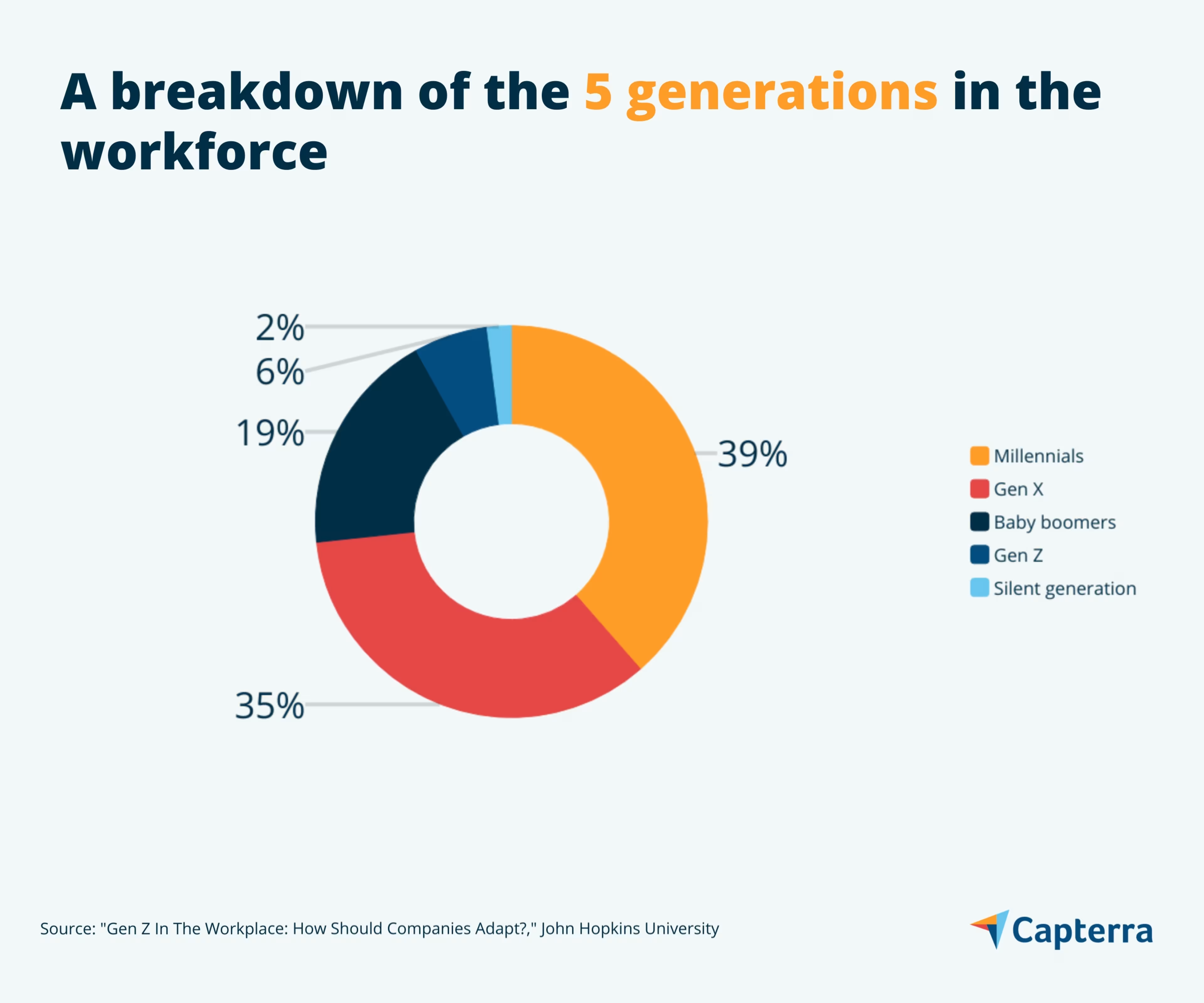
Ahead, we’ll take a look at the characteristics of each generation independently before providing advice on how to bridge intergenerational differences effectively.
Note: We’ve opted to leave the silent generation out of further research based on the fact that many workers from this group have already retired or are preparing to.
Baby boomers: hard workers who value work flexibility
Born: 1946-1964
Career stage: Late-stage, preparing to retire
Ten thousand baby boomers reach retirement age (65) every day, but even still, one in every four workers in the United States is a baby boomer[5,6]. This is indicative of baby boomers’ work ethic; when boomers entered the workforce, they faced high competition for jobs because of the rise in population that occurred post-WWII.
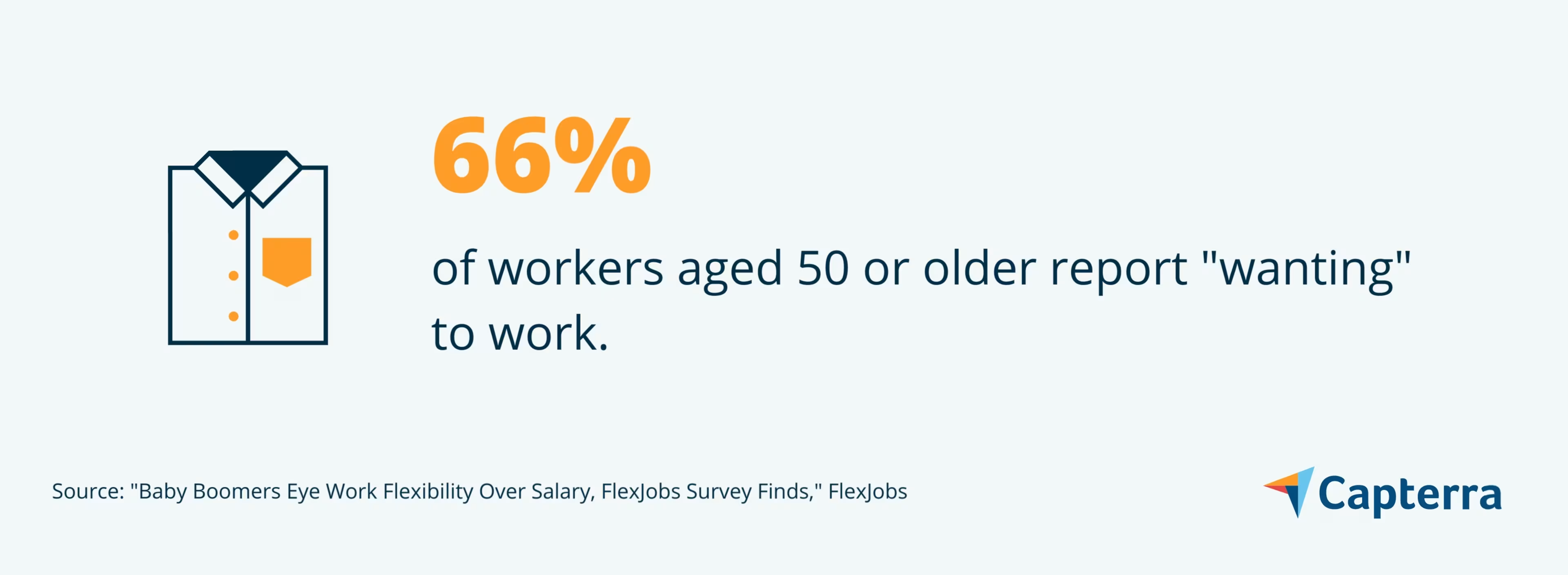
Further, despite stereotypes that baby boomers are not adaptable, they’re a generation who has embraced remote work. A survey of workers ages 50 or older found that work flexibility is the most important factor for this group when evaluating a job prospect[7]. In fact, 83% of those surveyed were open to full-time telecommuting and 72% were open to working a flexible schedule.
When asked what kind of intergenerational communication differences Owen has observed, he pointed out that baby boomers typically prefer traditional methods of communication:
“Historically, it's been more professional emails for the baby boomer generation— they want a more transactional communication approach. Whereas the newer generations are much more nonchalant and colloquial.”


John Owen
Director of security analytics at Fulcrum Technology
Gen Xers: champions of work-life balance
Born: 1965-1979
Career stage: Mid-to-senior level
Gen Xers currently make up the second largest generational group in the workforce. Because Gen X is sandwiched between two larger generations (boomers and millennials), they are often overlooked and misunderstood. But truthfully, Gen Xers have decades of work experience and currently hold over 50% of all leadership positions.[8]
One notable difference between Gen Xers and other generations is their lack of competitiveness: In one study, 73% of Gen Xers declared they were less competitive than other generations. They also prioritize doing meaningful work over earning a lot of money, and they believe job satisfaction is more important than job prestige.[8]
Increase job satisfaction with the right platform: Browse employee engagement software.
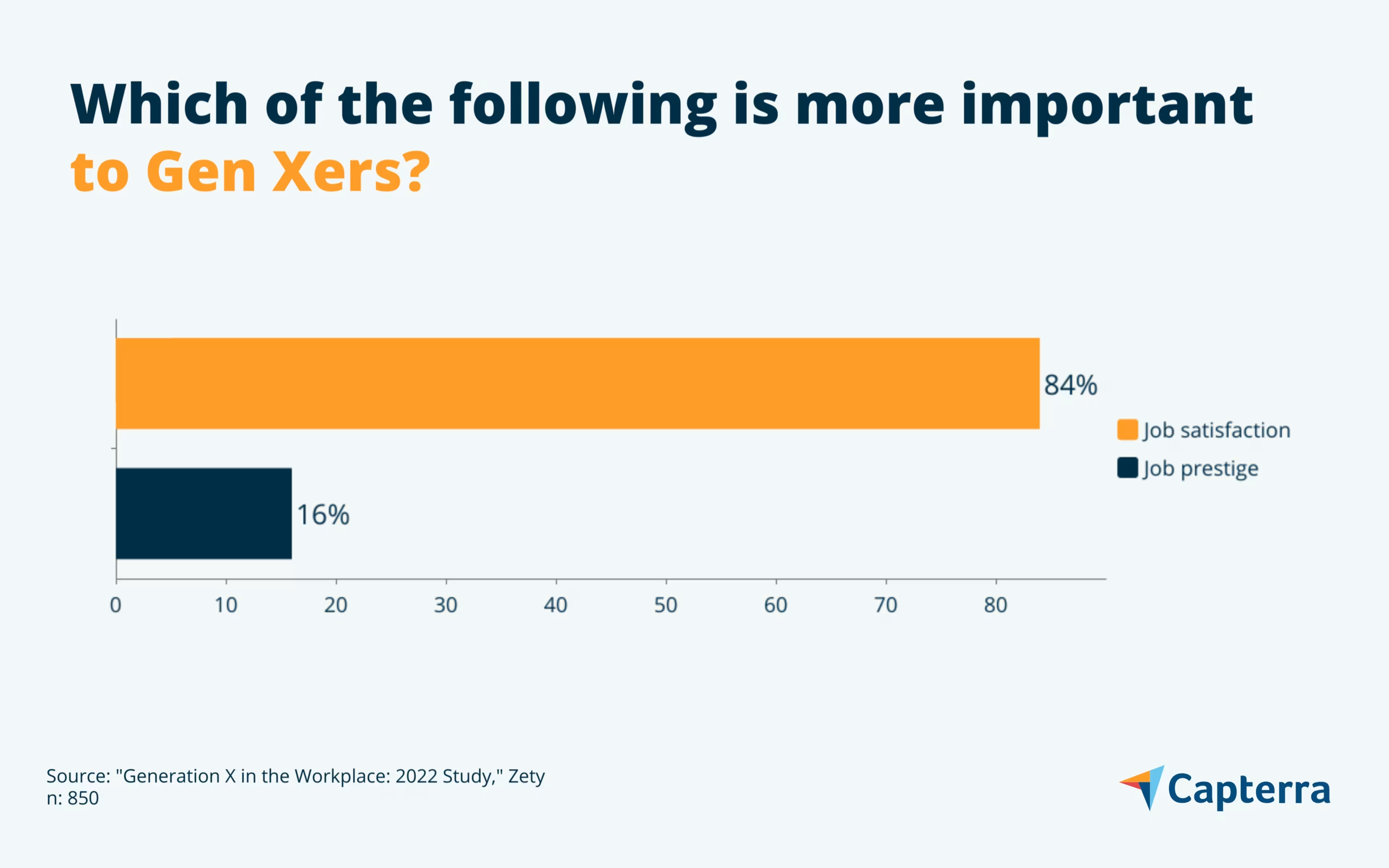
One factor contributing to this is that Gen Xers entered the workforce in the early ‘90s during a recession. They had to overcome challenges early on in their careers, and that made them a generation that placed less emphasis on their profession as a part of their core identities.
Millennials: digitally proficient change agents
Born: 1980-1994
Career stage: Entry-to-senior level
Millennials make up the largest portion of today’s workforce. A generation that grew up witnessing countless innovations in technology, millennials are tech-savvy and adaptable when it comes to embracing new tools at work. In fact, they’re even more “online” than those younger than them: A survey revealed that 72% of millennials feel that social media is an essential part of their lives—the highest response rate of all age groups.[9]
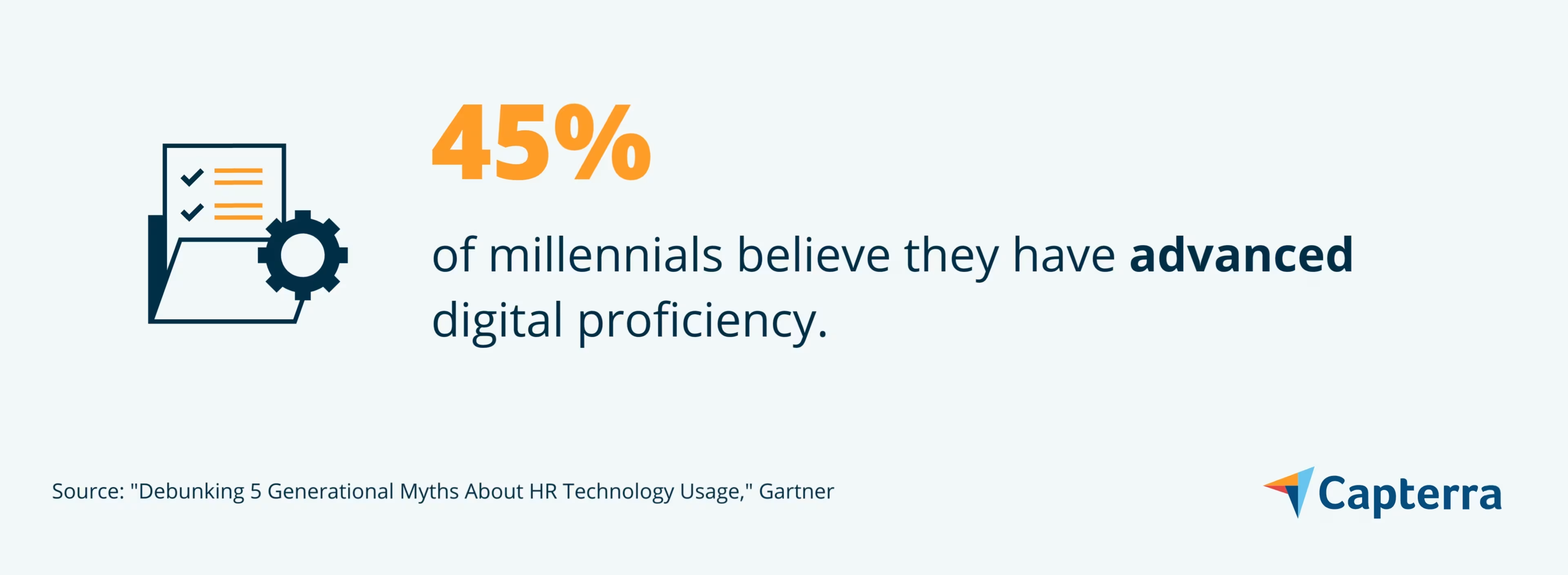
Owen made an observation related to this idea, recognizing the impact that technological advancements have had on behavior trends across generations:
"A lot of it has followed tech trends. More social media and apps have become available to generations over the past 20 years, and that’s definitely changed perception, access, collaboration, and engagement."
John Owen
Aside from their technological proficiency, millennials have differentiated themselves from older generations through their commitment to workplace DEI (diversity, equity, and inclusion). Seventy-six percent of millennials said they’d leave an employer if DEI initiatives were not offered, and nearly half (49%) said their company’s public positions on social issues impact their decisions to stay with an employer either “a great deal” or “a lot.” This is a big contrast to baby boomers, 57% of whom said that their company's public position on social issues has little to no impact on their intent to stay.[10]
Move your organization's DEI efforts forward with these resources:
Gen Z: Autonomous skill builders
Born: 1995 to 2010
Career stage: Entry-to-mid level
The youngest generation in the workforce, Gen Zers, kicked off their careers around the time of the COVID-19 pandemic. Many of them have only worked in hybrid and remote environments, which has led to the stereotype that Gen Zers prefer to work alone. In truth, Gen Zers value collaboration and teamwork in addition to having control over when, where, and how they work.
For instance, workplace collaboration tools are among the top four technologies Gen Zers recall using in the past 12 months. Interestingly, both Gen Zers and millennials value collaboration as a means to learn about new technology more than their older counterparts[11]:
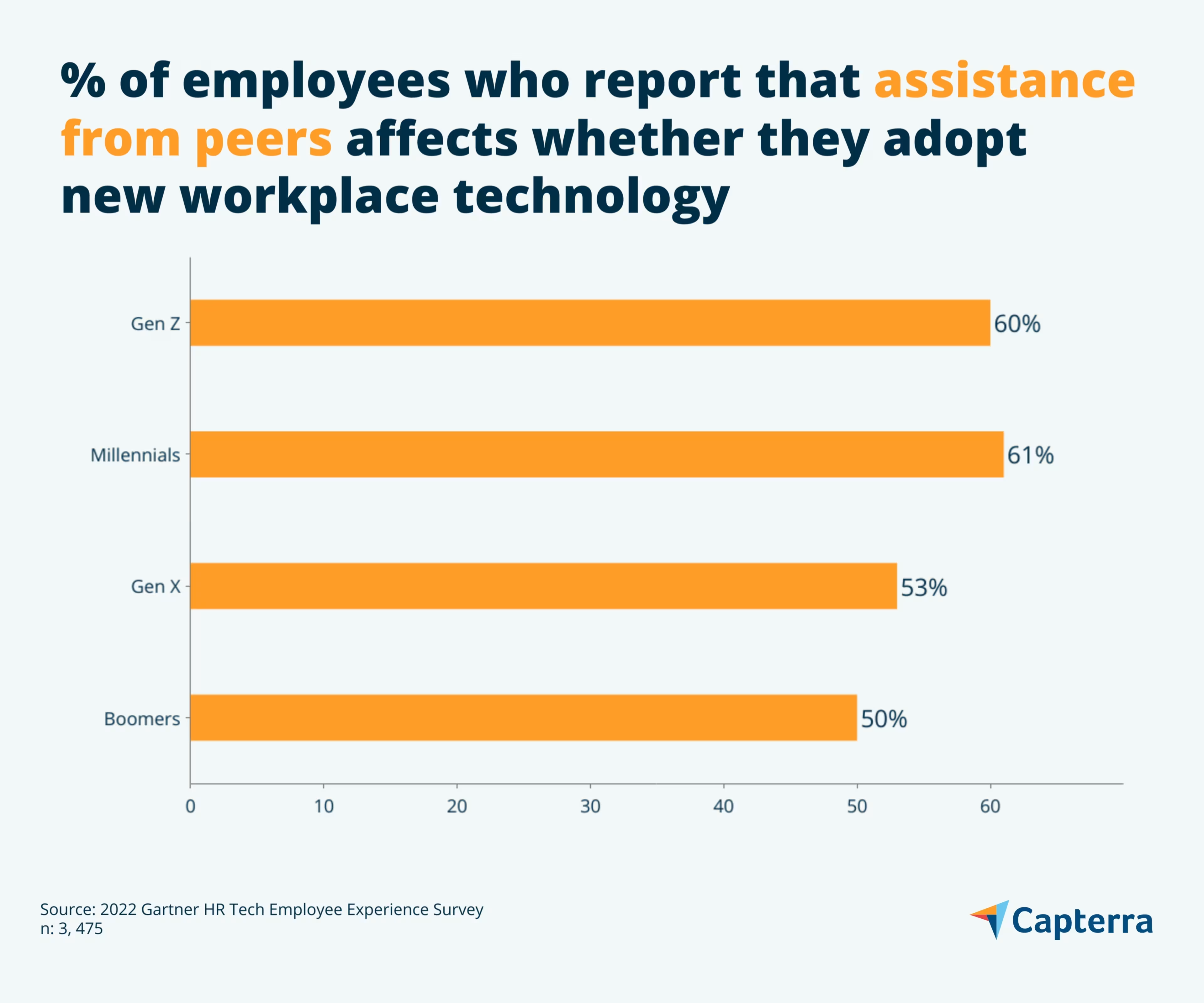
Another notable characteristic of Gen Zers is their desire to learn new skills. Forbes polled 1,000 American employees about the resources they want for career growth and found that 68% of Gen Zers want access to a learning management system—more than any other generation. Gen Zers also expressed interest in company-wide training from other departments (56%), stipends for continued learning (51%), manager trainings (47%), and performance reviews (47%).[12]
We asked Owen if he felt like certain generations have more of an appetite for career advancement opportunities than others, and here’s what he had to say:
"Newer generations have seen the quick turnover—especially being in IT. They’ve seen the lifecycle for an entry-level position is around eight months, so their expectation is to upskill and uplevel every eight months to a year and a half. But that has diminishing returns at some point."
John Owen
To Owen’s point, Gen Zers and millennials may have a higher interest in skill-building and career advancement opportunities than other generations simply because they’re earlier on in their careers.
Lastly, both Gen Z and millennials face more financial stress than older generations and that’s led to an uptick in side gigs:
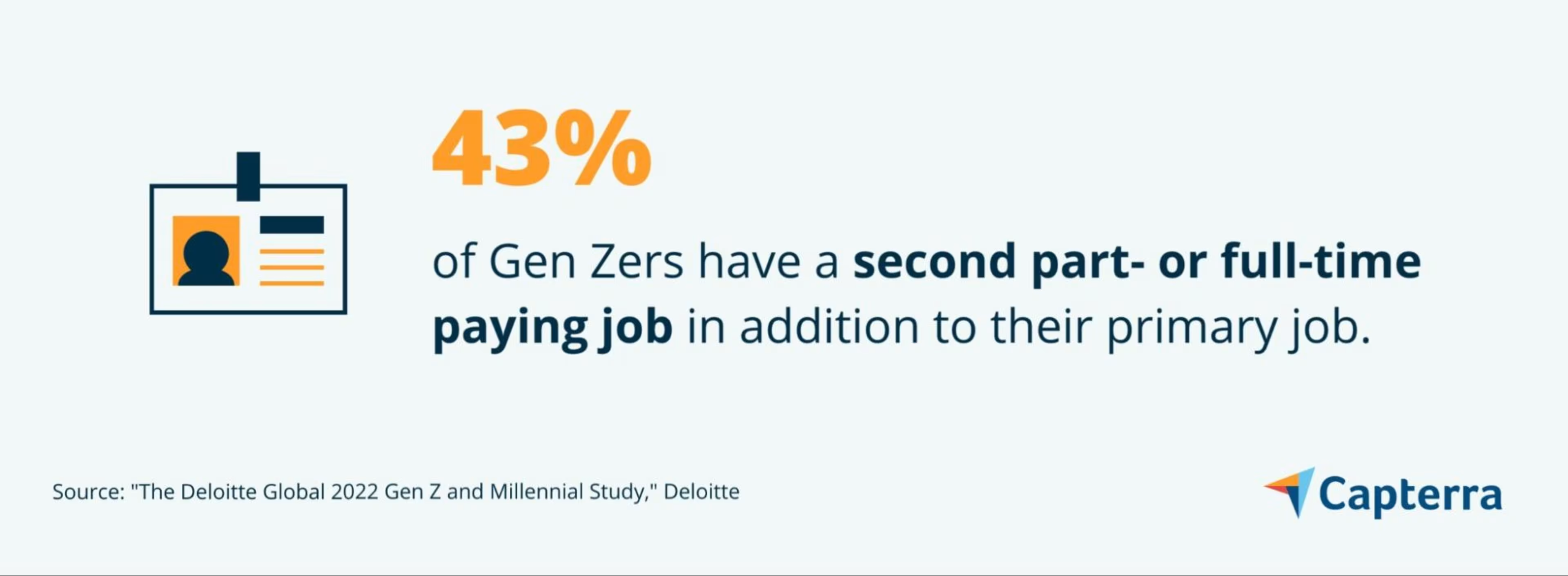
Current inflation aside, millennials and Gen Zers have been expressing concern over their personal finances for years. In one survey, 46% of Gen Zers and 47% of millennials reported that they live paycheck to paycheck and worry they won’t be able to cover their expenses.
3 initiatives that bridge intergenerational differences
1. Start a reverse mentoring program
Reverse mentoring is the inverse of the traditional mentor-mentee relationship where someone older or more tenured trains a less-tenured employee. Instead, reverse mentoring occurs when a less experienced employee shares their knowledge or perspective with a more senior employee. Reverse mentoring is not just an upskilling method—it’s an effective way to increase empathy and understanding among coworkers who differ from one another.
Curiously, Forbes’ survey found that the two generations who were the most interested in mentoring opportunities were Gen Zers (36%) and baby boomers (31%).[12] This implies that employees from these generations would be willing to participate in a reverse or traditional mentoring program.
Ready to get started? Browse mentoring software.
2. Support each stage of career development
There are six stages of career development, and an employee’s age is often correlated to the stage they’re in:
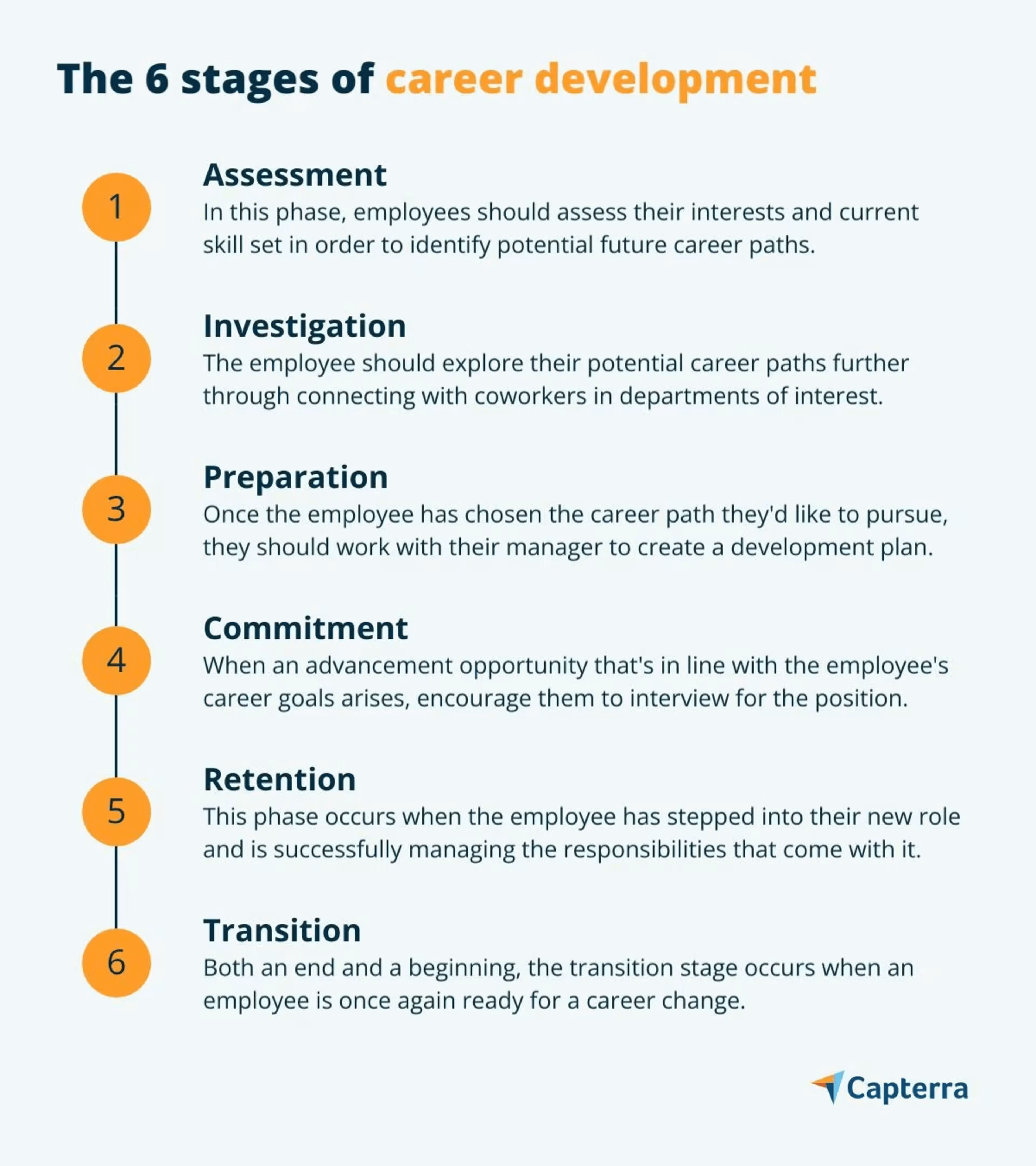
Recognizing and addressing each career stage's unique challenges and opportunities helps create an equitable employee experience across generations. In many cases, it can even mean having employees in a more advanced stage counsel those in earlier stages, another tactic that increases understanding and respect between employees in different age groups.
Bookmark these resources related to career development:
3. Empower employees to found resource groups
Employee resource groups (ERGs) are voluntary, employee-founded organizations within a business that unite those who share something in common. ERGs improve the employee experience by promoting inclusion. Whether group members join an ERG to rally around underrepresented employees or drive change within their local community, their participation will help them feel more connected to their peers and supported by their employer.
Remote and hybrid workforces can particularly benefit from ERGs because they allow coworkers from all across the business to meet and communicate about things that are important to them on a personal level.
New to ERGs? Go here next: What Are Employee Resource Groups?
Having a generationally diverse workforce is part of an effective DEI strategy
Sixty-two percent of employed adults say that it is either somewhat or very important to them to work at a place that has a mix of employees of different ages—a response that was on par with the amount that felt it was important to them to work with employees of different races and ethnicities.[13]
There’s no doubt that embracing age diversity within your organization will position your workplace as an appealing place to work, but the different perspectives and skills that each generation has to offer also provide real business benefits (like improved problem-solving and innovation).
We asked Owen what kind of initiatives or tactics he uses to increase empathy between his team members who differ from one another, and he talked about a recent conference his team attended in Las Vegas, saying:
"...those are honestly the best kind of team building experiences because you don't have the pressure to drive a work deliverable—you can kind of goof off and let your ‘real person’ come out…"
This is a throughline when it comes to strategies for bridging intergenerational differences: Encourage employees to engage with one another and be themselves, and most of the time, they will come to a point of mutual understanding. Your role as a people director or team leader is to give them opportunities to do this, whether it’s through starting a reverse mentoring program, providing support for ERGs, or planning a trip to a conference in Vegas.
Next, read:

